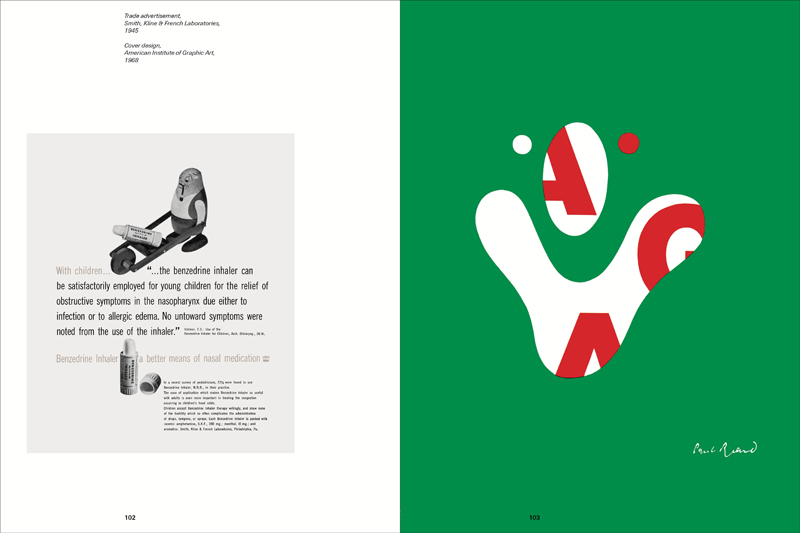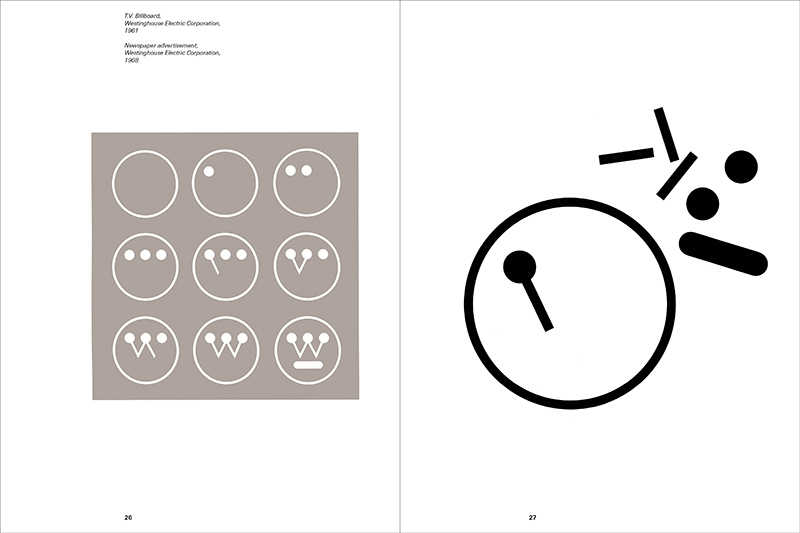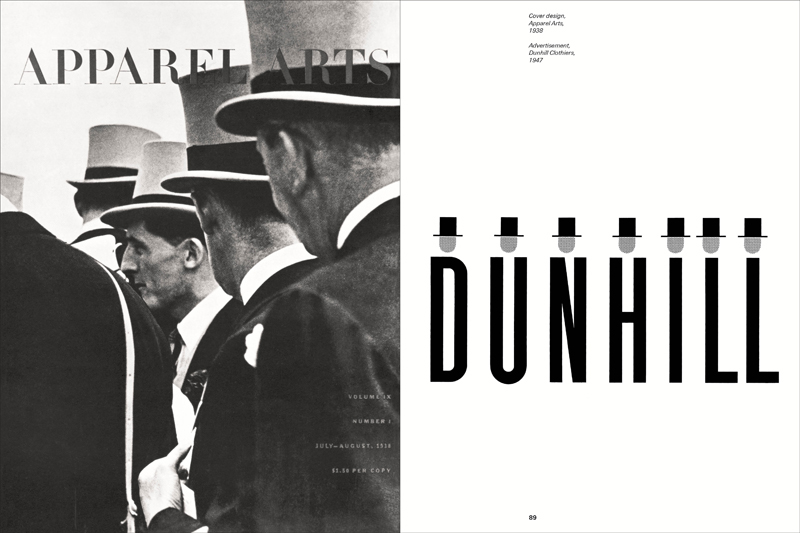
This is an excerpt of Steven Heller’s afterword from the book Paul Rand: A Designer’s Art, published by Princeton Architectural Press, 2016. Page spreads reproduced here with permission of the publisher.
Design was Rand’s overwhelming reason for being. “My life,” he said, “is my design.” Rand was born in 1914 Brooklyn into an orthodox Jewish immigrant family, a branch of whom were Lubavitch Hasidim. His parents would have preferred that he and his twin brother (who became a musician and died early in an auto accident) got a serious yeshiva education. Instead Rand studied at New York’s The Art Students League under the tutelage of George Grosz, among others, and took an artistic, albeit practical and commercial, turn that was financially remunerative. It was a road that led him, while in his early twenties, to renown as an advertising art director and graphic designer at Weintraub, a Jewish-run boutique agency, which eventually led him to become a master of logo creation. Given his background, it was hard to predict that he’d become a designer, but like other children of immigrants in pre- and post-World War II New York, graphic design opened opportunities for a livelihood through creative expression. Rand took this opportunity to escape the shetel mentality and never regretted it for a minute.
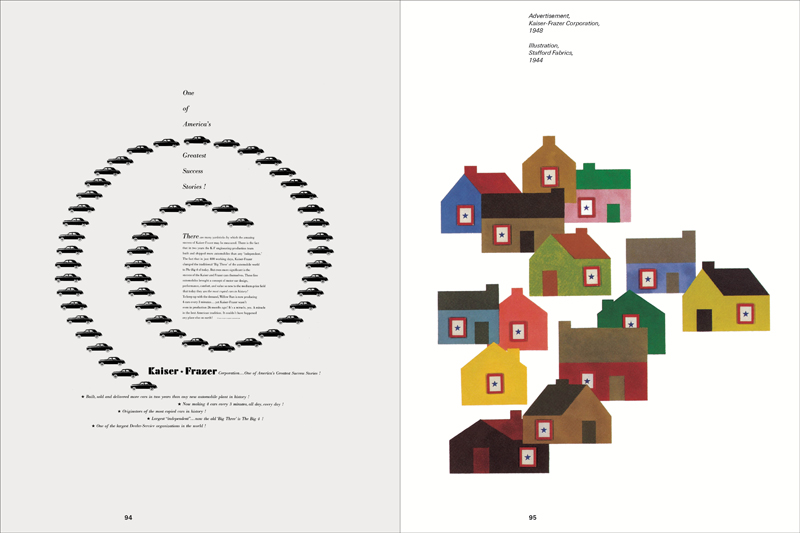
Rand never overtly expressed an overriding concern for how history would treat his role in this chosen field. Yet it is an educated assumption that after six decades of devoted practice, one of Rand’s reasons for starting to work on A Designer’s Art in 1980 was to secure what is clearly a vaunted place among midcentury moderns, and designers in general.
During the early 1980s, Rand could see there was mounting interest in documenting graphic design history among a cadre of younger designers and scholars. This was triggered, in part, by a series of history lectures originally presented by designer and teacher Louis Danziger, who himself was inspired by Rand’s own historical delving, and the 1983 landmark publication by Philip B. Meggs, A History of Graphic Design. The reputations of many Rand contemporaries were being dusted off and their contributions reexamined, resulting in critical scholarship that evolved into a new canon. Rand was keen on recognition but did not want to be included among those he did not respect. Therefore, his place had to be defined on his own terms and by those voices he trusted to tell his story. In 1984 the Walker Art Center magazine Design Quarterly 123 published “A Paul Rand Miscellany” as the prototype-preview of the self-authored A Designer’s Art. This collection of his previously published, reedited philosophical and theoretical essays revealed the precepts he followed and was illustrated by his own designs and inspirational photographs. It was the best vehicle to divine his role and avoid the self-promotional fluff that annoyed him when done by others. (Throughout his career, Rand never issued any self-promotional materials; he relied solely on his signature on all his work to spread his reputation.)
In the process of refining his own book, Rand reopened a genre of graphic design manifesto-monographs that had not existed since the 1930s, though it was soon filled with manifesto-esque tomes by, among others, Tibor Kalman, Bruce Mau, Paula Scher, and Stefan Sagmeister. Rand set the stage for the books that followed. Everything about A Designer’s Art, from its compact size — more similar to a novel or nonfiction book than a coffee-table book — to its original flexible cover, which Rand half-jokingly likened to a Bible, made it look and feel distinct from most visual portfolio and process books that were the norm then and even now.
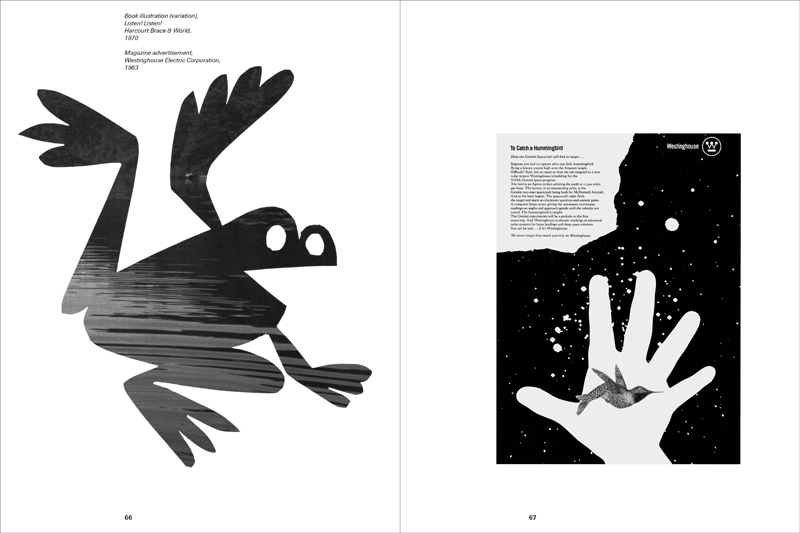
A Designer’s Art was intended as neither a chronological record of his career nor an anthology of greatest hits (though they were included). While all the imagery is exemplary graphic design, the book is also a treatise on the intersection of art, design, form, and content. It was no accident that Rand chose as his publisher Yale University Press rather than one of the more predictable trade-oriented houses known for how-to books. It was assumed that the Yale imprimatur would ensure his book was taken seriously outside of the design ghetto, which was Rand’s ultimate intention. Paradoxically, however, university presses were not as rigorous about their production values, and Yale balked at some of Rand’s demands for costly quality control. He nonetheless saw to it that his book was produced with the same minute attention to detail he’d bestow on an IBM, Cummins Engine, or Westinghouse annual report.
Rand invested his own money to ensure that the best book printer in the United States, familiar with and capable of responding to his strict quality concerns, was hired. Mossberg & Company in South Bend, Indiana, ultimately produced all three of Rand’s Yale University Press books, and the company’s principals, James and Charles Hillman, understood that Rand, who often worked from 35 mm slides, would be on-site for hours on end, holed up for days in a nearby hotel, making substantive color changes while pages ran on press. For years, Rand’s friend Mario Rampone of PDR (Pastore De Pamphilis Rampone: Computer Typographers, NYC) was the preferred typesetter. He set all the typewriter manuscripts as formal type galleys on which Rand would make countless handwritten typographical corrections and textual rewrites until his words were as flawless as the imagery. On June 12, 1985, in a letter to me accompanied by a film box from Printer’s Supply of Indiana with a “preliminary run” of folded and gathered proofs, Rampone wrote, “The great pains that went into this book should make it a tribute to Mr. Rand and the Graphic Arts industry itself.”
